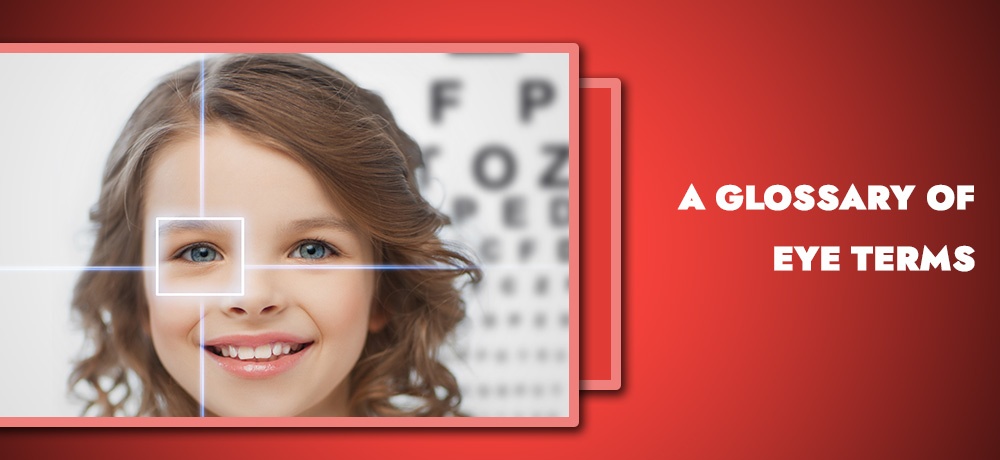A Glossary Of Eye Terms

Every industry has its own language and terms. These words and phrases can be confusing to anyone who is not part of a specific industry’s daily operations, and the eye care business is no exception.
So, to help you understand the terms, acronyms, and phrases regularly used when visiting the opticians, For Eyes Clinic has created this handy reference guide. Here you’ll find valuable information allowing you to comprehend and communicate your eye care needs effectively.
Myopia or near-nearsightedness: It’s a condition in which distant objects appear to be blurry. It can be corrected with refractive lenses or contact lenses.
Hyperopia or far-nearsightedness: It’s a condition in which near objects and sometimes distant objects can appear hazy. It can be corrected with refractive lenses and contact lenses.
Astigmatism: This condition can be a result of an irregular-shaped cornea or a disoriented lens. It’s a widespread condition that may occur along with myopia or hyperopia. Astigmatism can also be corrected with refractive lenses and contact lenses.
Presbyopia: As we get old, the natural lens in the eye loses its flexibility, making it more challenging to focus on objects up close. It can be corrected with spectacles.
Glaucoma: It’s a condition in which the optic nerves are damaged or lose nerve fiber layers. If left untreated, it can cause visual field loss and, eventually, vision loss. Therefore, it’s essential to see an optometrist regularly to ensure glaucoma development is caught early.
Floaters: These are visual disturbances, typically in the form of black spots or thread-like objects within one’s vision. It’s more common in older people or patients with a high refractive error. In cases where the floaters are new or accompanied with flashes of light, see an eye care provider right away.
Amblyopia (lazy eye): It’s a condition in which one eye is weaker than the other. It’s crucial to provide proper correction for the weaker eye during childhood to ensure the vision is developed to its maximum potential.
Cataract: This condition is more common in older people or patients with certain systemic diseases or medications. A cataract is the formation of a cloudy area in the lens of the eye. It causes the vision to become blurry. When the blur is no longer correctable with spectacle lenses, surgical intervention is recommended.
YAG laser surgery: This procedure is used to re-polish the lens after cataract surgery in cases where the new lens develops a film over it.
Pink eye: Inflammation or infection in the eye that causes the eye to appear red or pink. Since there are many different causes of a red eye, one should always see their eye health provider to determine the best treatment course.
Stye: A stye is a red, painful bump near the edge of your eyelid. It’s best managed within the first few days of onset. See an eye health provider for the best course of treatment.
Heat therapy: Heat compresses help open meibomian glands that produce tears and are commonly used to treat problems related to dry eyes or styes.
Lubricating drops: These are artificial tears that help manage dry eyes and digital eye strain conditions.
Progressive lenses vs. bi-focal: Progressive lenses provide adequate vision correction for all ranges of vision, including distance, intermediate, and near. Bi-focals offer visual clarity for only distance and near vision. Bi-focals are also cosmetically less appealing as the lenses come with a distinct line.
Anti-fatigue lenses vs. computer lenses: Anti-fatigue are similar to progressive lenses, but they are typically milder for the near portion. Computer lenses are more specialized, with a larger intermediate zone to reduce distortion for those who spend more time in front of a screen.
We hope these terms made you feel more confident about visiting an eye doctor. If you’re looking for an eye specialist, reach out to the experts at For Eyes Clinic. We offer our services across Abbotsford, Mission, Chilliwack, Aldergrove, and the surrounding areas.
We offer stylish eyeglasses and contact lenses, and our eye exams are conducted by an interdependent optometrist at the shop location.
View our complete list of services here, or get in touch with us here.